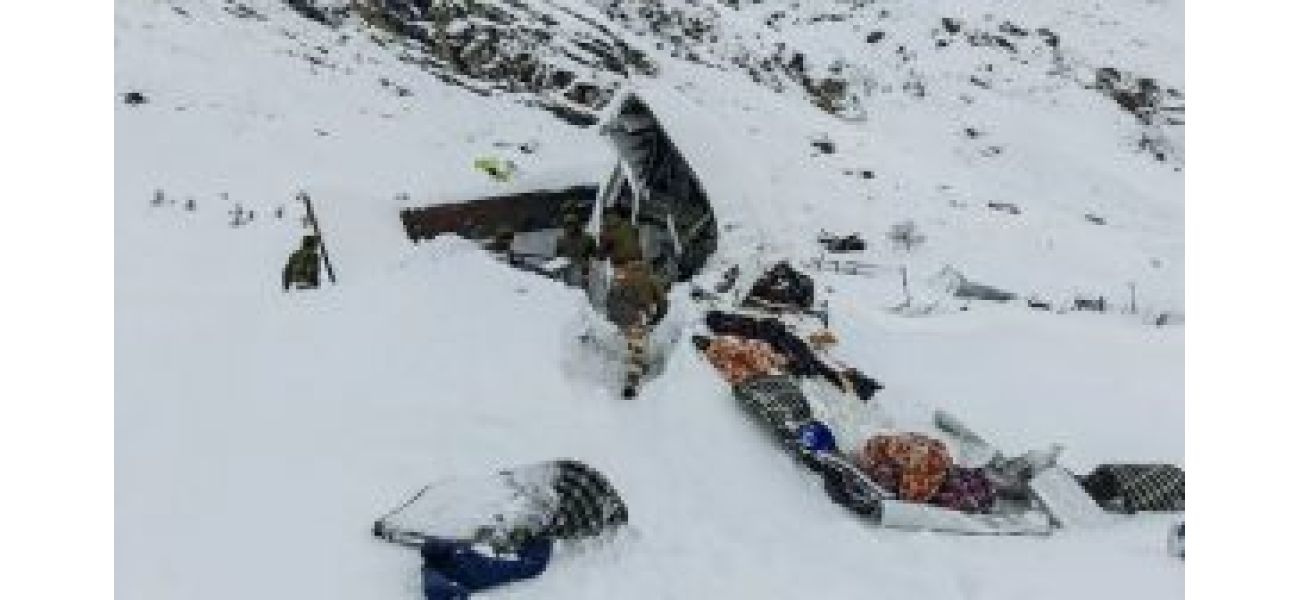Activists blame poor management for Uttarakhand avalanche disaster.
Activists blame administrative negligence for the deaths of 8 workers in an avalanche at a BRO camp in Uttarakhand, citing a lack of response to a snowslide warning and reckless construction in avalanche-prone areas.
March 4th 2025.

Last week, an avalanche hit a BRO camp at Mana in Uttarakhand's Chamoli district, resulting in the death of eight workers. Social activists are pointing fingers at administrative negligence and reckless construction in avalanche-prone areas as the main causes of such incidents. They believe that if the authorities had taken the snowslide warning seriously, these lives could have been saved.
On February 27, the Defence Geoinformatics Research Establishment in Chandigarh issued an avalanche warning for a 24-hour period, specifically for places above 2,400 meters in Uttarakhand, including the districts of Chamoli, Uttarkashi, Rudraprayag, Pithoragarh, and Bageshwar. However, the avalanche hit the BRO camp in Chamoli between 5:30 am and 6 am on February 28, trapping 54 workers. While 46 were rescued, unfortunately, eight lost their lives.
Atul Sati, a social worker and convener of Joshimath Bachao Sangharsh Samiti, expressed his disappointment with the authorities' response, stating that their negligence was the cause of these deaths. He questioned why the workers were not advised to move to safety when there was a clear warning in place.
In response to the incident, the Uttarakhand government issued an advisory for tourists in Auli, a skiing destination with no history of avalanches. This move was seen by Sati as an attempt to divert attention from the government's failure. He also pointed out that the State Emergency Operations Centre alerted the concerned district magistrates only after the avalanche had already hit the camp, despite the weather office in Dehradun issuing a yellow alert two days in advance.
Sadly, this is not the first avalanche incident in the Chamoli district. In the last four years, two dwelling units of BRO workers have been destroyed by avalanches. In April 2021, an avalanche in Niti Valley claimed the lives of several laborers. Experts believe that these disasters are a result of reckless construction in vulnerable areas.
Renowned geologist MPS Bisht, who specializes in weather movements in the Kedar Valley, stated that the entire area is prone to avalanches, especially from Nar Parvat. He also pointed out that construction is often carried out without considering the consequences, resulting in such disasters.
Social activist Mangala Kothiyal highlighted the failure of authorities to learn from past experiences, stating that a similar incident occurred in April 2021 at a BRO camp in Rimkhim, Niti Valley, where eight laborers lost their lives. This time, it was the Mana Valley's turn, and once again, the victims were BRO workers.
While avalanches are more common during winters in the upper Himalayan region, they can occur in any season in snow-covered mountains. Surveyors, mountaineers, and even the army and paramilitary forces are always alert to such disasters. The army even evacuates their winter defense posts in places with a high risk of avalanches, such as Badrinath, located just 200 meters from the accident site.
Pitambar Molfa, the village head of Mana, recalled how in the past, even laborers would leave their container houses during winters to seek shelter in safer areas like Badrinathpuri. However, this time, the authorities did not advise them to do so, thinking that there was not enough snow in the area yet. Molfa believes that this incident should serve as a wake-up call, and people should be allowed to visit these areas only when absolutely necessary. He also emphasized the importance of alerting residents when weather warnings are issued.
On February 27, the Defence Geoinformatics Research Establishment in Chandigarh issued an avalanche warning for a 24-hour period, specifically for places above 2,400 meters in Uttarakhand, including the districts of Chamoli, Uttarkashi, Rudraprayag, Pithoragarh, and Bageshwar. However, the avalanche hit the BRO camp in Chamoli between 5:30 am and 6 am on February 28, trapping 54 workers. While 46 were rescued, unfortunately, eight lost their lives.
Atul Sati, a social worker and convener of Joshimath Bachao Sangharsh Samiti, expressed his disappointment with the authorities' response, stating that their negligence was the cause of these deaths. He questioned why the workers were not advised to move to safety when there was a clear warning in place.
In response to the incident, the Uttarakhand government issued an advisory for tourists in Auli, a skiing destination with no history of avalanches. This move was seen by Sati as an attempt to divert attention from the government's failure. He also pointed out that the State Emergency Operations Centre alerted the concerned district magistrates only after the avalanche had already hit the camp, despite the weather office in Dehradun issuing a yellow alert two days in advance.
Sadly, this is not the first avalanche incident in the Chamoli district. In the last four years, two dwelling units of BRO workers have been destroyed by avalanches. In April 2021, an avalanche in Niti Valley claimed the lives of several laborers. Experts believe that these disasters are a result of reckless construction in vulnerable areas.
Renowned geologist MPS Bisht, who specializes in weather movements in the Kedar Valley, stated that the entire area is prone to avalanches, especially from Nar Parvat. He also pointed out that construction is often carried out without considering the consequences, resulting in such disasters.
Social activist Mangala Kothiyal highlighted the failure of authorities to learn from past experiences, stating that a similar incident occurred in April 2021 at a BRO camp in Rimkhim, Niti Valley, where eight laborers lost their lives. This time, it was the Mana Valley's turn, and once again, the victims were BRO workers.
While avalanches are more common during winters in the upper Himalayan region, they can occur in any season in snow-covered mountains. Surveyors, mountaineers, and even the army and paramilitary forces are always alert to such disasters. The army even evacuates their winter defense posts in places with a high risk of avalanches, such as Badrinath, located just 200 meters from the accident site.
Pitambar Molfa, the village head of Mana, recalled how in the past, even laborers would leave their container houses during winters to seek shelter in safer areas like Badrinathpuri. However, this time, the authorities did not advise them to do so, thinking that there was not enough snow in the area yet. Molfa believes that this incident should serve as a wake-up call, and people should be allowed to visit these areas only when absolutely necessary. He also emphasized the importance of alerting residents when weather warnings are issued.
[This article has been trending online recently and has been generated with AI. Your feed is customized.]
[Generative AI is experimental.]
0
0
Submit Comment





